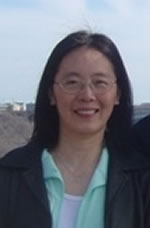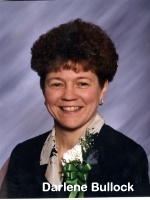|
CELEBRATE PHYSICAL EDUCATION:
DANCE CONTEST AT SLIPPERY ROCK AREA ELEMENTARY SCHOOL
written by Wei (Willa) Bian,
assistant professor, Slippery Rock University
 On
the morning of February 11, 2011, I was invited to attend
the 20th Annual Dance Contest at Slippery Rock Elementary
School. Ms. Darlene Bullock, who teaches K-5 physical education
for two school buildings, was the sole physical education
teacher present at the contest. On
the morning of February 11, 2011, I was invited to attend
the 20th Annual Dance Contest at Slippery Rock Elementary
School. Ms. Darlene Bullock, who teaches K-5 physical education
for two school buildings, was the sole physical education
teacher present at the contest.
CONTEST PROCEDURE:
Walking into the gym area, I saw children sitting scattered
around the gym dressed in different costumes. Slippery Rock
Area Elementary has three homerooms for each grade so the
total number of the students in the gym was around 500 kindergarteners
to fifth graders. Classroom teachers, who sat at the front
of the gym, served as the judges for the contest. Each class
was assigned a zone area in the gym with a designated color:
red, green, orange, and blue. To begin, Ms. Bullock handed
each judge an evaluation sheet and explained the criteria
used to assess each homeroom’s performance. This criteria
centered on synchronization, rhythm, following cues, and enthusiasm.
The program started with a small group of 5th graders who
danced along to: "Let's Get It Started" while tumbling
and performing hand stands to show skills they had learned
during their time with Ms. Bullock in physical education.
Soon after beginning their routine, they were joined by the
rest of the 5th graders. The whole gym was filled with excitement,
smiles, and the spirit of celebration.
Here is the Program of 2011 Dance Contest
| 1. |
"Let's Get It Started" |
5th grade |
| 2. |
"Ghostbusters" |
4th grade |
| 3. |
"Men in Black" |
3rd grade |
| 4. |
"Jet Airliners" |
2nd grade |
| 5. |
"Little Brown Jug" |
1st grade |
| 6. |
"Proud to be an American" |
Kindergarten |
| 7. |
"Thriller" |
5th grade |
| 8. |
"Party In The USA" |
4th grade |
| 9. |
"Beat It" |
3rd grade |
| 10. |
"Wanna Be Startin' Something" |
2nd grade |
| 11. |
"Move It" |
1st grade |
| 12. |
"Cupid Shuffle" |
Kindergarten |
From the program, you can see that each grade performed two
dance routines during the contest. Ms. Bullock informed me
that dance routines 1 thru 6 have been in the program for
many years. Dance routines 7 thru 12, however, were new dances
introduced when rock star Michael Jackson passed away. Ms.
Bullock found the chance to introduce "Thriller"
as a new dance to the students, as a great opportunity. I
was so impressed by such a well organized program that I decided
to interview Ms. Bullock after the dance contest, and share
the information to pelinks4u readers so that you
may gather some important information to begin a similar contest
at your school.
THE INTERVIEW
 Ms.
Bullock began by explaining to me how the contest began. She
informed me that the first dance contest began in 1990 when
she wanted to use more popular dance activities to motivate
students to participate in physical education classes. Since
then, it became an annual event every February. Ms.
Bullock began by explaining to me how the contest began. She
informed me that the first dance contest began in 1990 when
she wanted to use more popular dance activities to motivate
students to participate in physical education classes. Since
then, it became an annual event every February.
The dance unit runs for 3-4 weeks right after the beginning
of the spring semester. The physical education classes meet
twice a week for 30 minutes. Students learn dance steps, how
to properly use different locomotor skills such as walk, slide,
gallop, skip, jump, hop, etc., as well as non-locomotor or
axial skills such as twist, turn, push, pull, stretch and
bend, etc in the dance routine. The goal of using these skills
is to enable students to meet objectives in the psychomotor
domain.
In the cognitive domain, students learn to memorize movement
sequences in the dance routine, and demonstrate their understanding
of movement concepts such as personal and general space, levels,
directions, speed, and body awareness. In addition, Ms. Bullock
expressed how this dance contest also promotes a positive
attitude toward physical activity participation, especially
for those children who are less skilled when performing sport-specified
skills. Ms. Bullock stated that "Kids are looking forward
to the following year because they know that they will learn
another two new dances every year. They watched each other
during the dance contest and want to do "Thriller"
when they become 5th graders." She also said that "It's
not the girls but the boys who ask what the next dance will
be."
Cooperation, expression, and team-building are other aspects
in which this dance unit and contest can benefit students
in the affective domain. Since their performance is judged
by homeroom teachers, they have to work together to achieve
the common goal. Not only can students express themselves
by dance movements, but by their costumes they have made for
the performance. These colorful and unique self-designed costumes
are indicators of the children's creativity and imagination.
Additionally, since most of the dances are to up-beat songs,
it is "high in calorie burning." After watching
the music videos on YouTube,
Ms. Bullock choreographs and adjusts the dance routine to
make it developmentally appropriate for each grade level.
During the rehearsal and performance, she uses action cues
to guide students to move together to the music beats, or
dance with quick steps, jumps, turns, or kicks. Each dance
routine runs about 3-5 minutes, and students repeat the same
movement sequence several times throughout the routine. As
a result, Ms. Bullock indicated that the activity level is
between moderate to high, which is very important to promote
health related physical fitness.
When being asked on the role of this dance contest to serve
for physical education program advocacy, Ms. Bullock told
me: "It's a time that all of us feel close." Due
to the gym area limit, parents cannot be present to watch
their kids' performance. However, the event is videotaped
and broadcasted by the local cable service. Many parents will
inquire by calling the school or asking classroom teachers
for the date and time of the broadcasting.
Ms. Bullock expressed that parents want to see what their
children are learning from physical education classes. It
is also a time for classroom teachers to be part of the physical
education program. Not only are teachers impressed by the
students, but they are also impressed that Ms. Bullock is
able to lead all 12 dances from beginning to end during the
contest.
Music, dances, smiling faces, and clapping hands - this dance
contest is a truly extraordinary tradition that will celebrate
physical education, physical activity participation, and friendship
for many years.
The following are suggestions for physical education teachers
who plan to implement this event based curriculum into their
program:
Start small: Organizing a school-wide event
requires a lot of time and energy. To ensure the success of
the event, physical education teachers can pilot the event
by teaching one dance routine to one or two grade levels first,
and then teach more dances to all grade levels. Starting with
a dance contest event that only includes students at one or
two grade levels can be more manageable and a good starting
point. Gradually, the teacher can introduce more dance routines
to more grade levels for a successful school-wide celebration.
It would be better to select music or dance routines that
are familiar to teachers and students. Depending on the complexity
of the routine, the teacher can schedule 4-6 physical education
lessons as an instructional unit to allow students to learn
and practice for the final performance.
Involve more people: Physical Education
teachers should consider this event-based curriculum as a
means to connect people within and outside the school building.
School administrators, staff, and teachers, as well as parents
can be part of this dancing contest event. Based on my observation,
I saw parent volunteers play an important role by helping
Ms. Bullock direct students to their assigned zone areas.
In addition, I saw classroom teachers serving as judges for
the contest and more than ten 5th graders who served as group
assistants to lead the dance routine when Kindergarteners
and 1st graders performed. School staff can also help by video
recording the event and putting it on DVD. The more people
get involved, the more connections are built.
Apply progressive instruction: Task progression
is critical for students to learn and practice any motor skills,
especially at the elementary level. Teachers can introduce
the dance routine by teaching one or two dance movements without
music. Once students are familiar with the movements, let
them listen to the music and dance to the music. Use a few
action cues such as "turn right, and step," or "jump,
slide to the left" to guide students' performance.
Divide the routine into several parts, and then rehearse
the whole routine several times to reinforce the correct movements.
When demonstrating the dance movement, teacher can use mirror
demonstration method when they face the students. Or demonstrate
the movement from different directions. Make sure that every
student has his or her personal space, and is able to see
the demonstrator's performance. Teachers should constantly
observe and assess students' performance and provide ample
movement-specific feedbacks when necessary.
I would like to express my sincere admiration for Ms. Darlene
Bullock, for her devotion to the physical education program,
and for her permission to let me write this article to share
what she has been doing with other fellow teachers. Thank
you, Ms. Bullock. Let this high quality physical education
program continue to rock and roll toward a higher level.
(back to pelinks4u homepage) |




 On
the morning of February 11, 2011, I was invited to attend
the 20th Annual Dance Contest at Slippery Rock Elementary
School. Ms. Darlene Bullock, who teaches K-5 physical education
for two school buildings, was the sole physical education
teacher present at the contest.
On
the morning of February 11, 2011, I was invited to attend
the 20th Annual Dance Contest at Slippery Rock Elementary
School. Ms. Darlene Bullock, who teaches K-5 physical education
for two school buildings, was the sole physical education
teacher present at the contest.  Ms.
Bullock began by explaining to me how the contest began. She
informed me that the first dance contest began in 1990 when
she wanted to use more popular dance activities to motivate
students to participate in physical education classes. Since
then, it became an annual event every February.
Ms.
Bullock began by explaining to me how the contest began. She
informed me that the first dance contest began in 1990 when
she wanted to use more popular dance activities to motivate
students to participate in physical education classes. Since
then, it became an annual event every February.